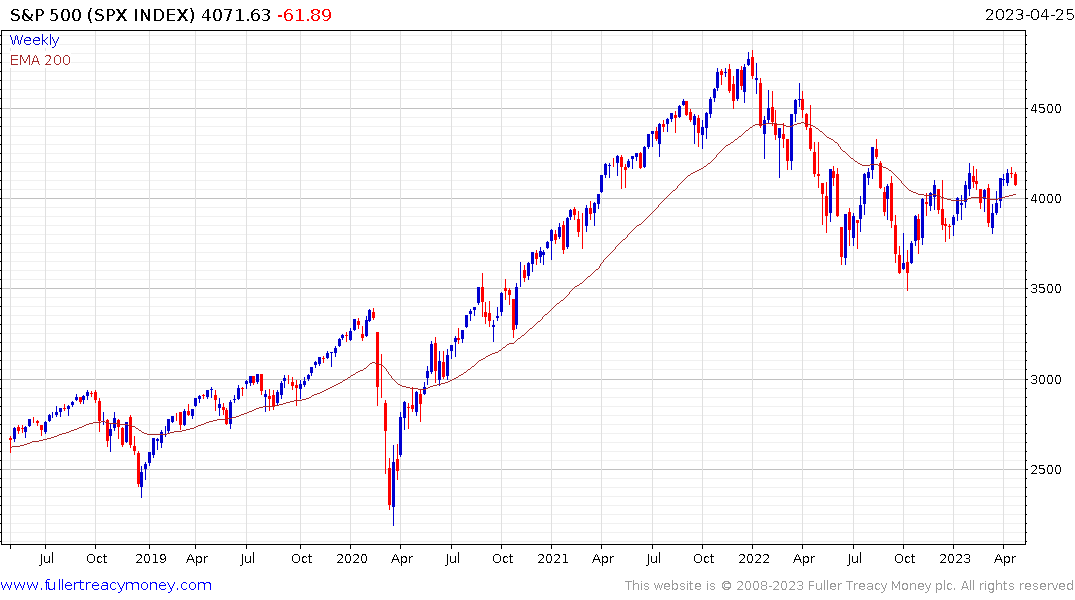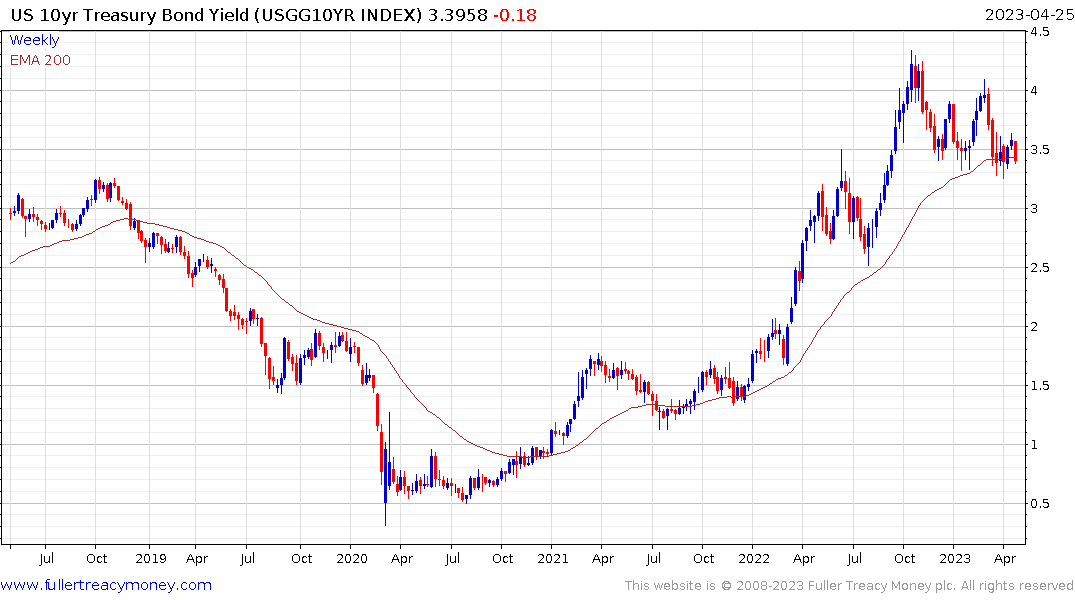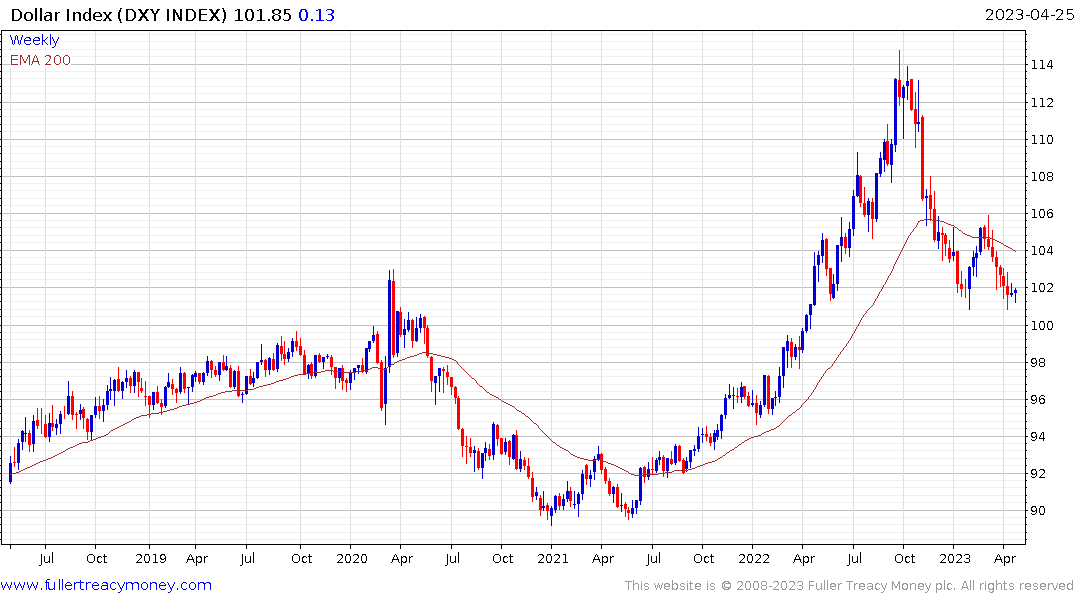The Fed's next move
Thanks to a subscriber for this report from UBS which may be of interest. Here is a section:
Aggregate hours worked in the private sector declined in February and declined again in March. Last week we walked through why we estimate the labor market has come back into alignment over the course of the last year. We also note that for all the talk of labor hoarding, filings of initial claims for unemployment insurance over the last four weeks have run higher than all of 2019 and most of 2018. Layoff announcements have been running above the post-GFC pace. Clearly some employers are laying off.
In our economic baseline, we assume the labor market carves out a peak this summer, and we pencilled in the July employment report as the time we expect the first negative payroll print. We'll see. However, our empirical models are moving that way. In the recent compendium (on page 17 at this link) , a leading indicator model developed by UBS's Pierre Lafourcade noted that a rising share were in contraction (defined as having passed a cyclical peak), and the same for a broader set of employment indicators that reflect labor market conditions.
"Historically, once roughly 50% of all series contract, payrolls go negative (which is intuitive), but it's the leading indicator bucket that tells you when that is likely to happen (it shoots up from 40% to 80% of series contracting in just a few months). The upshot is that while private non-farm employment is still growing, an increasing share of the underlying dynamics is turning sour," he wrote in the compendium in late March.
Here is a link to the full report.
The big question for all investors is the rationale for raising rates. The answer to that question will inform the decision on how much they will cut rates during a downturn and how long rates will stay down before tightening resumes.
I see four scenarios: 1. The Fed tightened rates to combat an inflationary surprise that got out of control in the aftermath of the pandemic stimulus. If that were the only reason to raise rates, the logic suggests when inflation falls so will rates.

Since CPI peaked in May 2022. The Fed had kept raising rates to ensure the peak is confirmed. The opinion expressed by the stock market is the decline in inflationary pressures will soon abate and an overshoot is unlikely. That’s the basis for the rebound seen since October which is now looking tired.

2. The Fed has to create a viable market for US Treasuries. The traditional buyers of US debt like China, Japan and Saudi Arabia are less than enthused with inflation and have deserted the market.
Faced with falling demand, they have no choice but to raise rates to make the market sufficiently attractive to encourage participation. That implies a willingness to endure a Volcker-like recession to kill demand in the economy and conquer inflation. If that rationale wins out the potential for interest rate cuts, absent a major economic contraction, is significantly reduced.
3. They renege on the commitment to achieve price stability and tolerate a higher inflation rate for the lengthy medium term, in a modern-day version of financial repression. That’s the most fervent hope of gold investors.

4. The Dollar Index continues to trade lower. That suggests global investors think the USA’s newfound respect for its position as reserve currency holder is too little too late. The weaponization of the Dollar has caused a paradigm shift in the long-term perception of the Dollar as a reliable store of value.
If that is right, interest rates cannot go back down to zero. The USA will be forced to offer higher rates to attract capital and inflationary pressures will remain a pressing issue.
That also supports the medium-term outlook for gold, it helps to explain why ex-US assets are outperforming the US and why bond yields are stubbornly high.
Back to top

